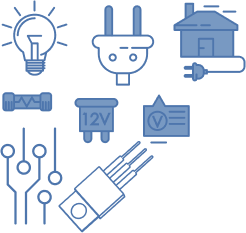TutorBin came into existence to develop a learning scope for every student. Creating a positive environment to study is the main aim of this organization, where students can learn without worrying about finances, time crunch, and other problem areas. Team TutorBin focuses on helping students achieve a good learning experience and enables them to enhance their academic performance. Let's see how it assists students to do better every day.
A Strong Base of SMEs With Extensive Experience- The presence of highly qualified SMEs with vast tutoring experience help students overcome their learning and academic performance challenges. Students get a thorough understanding and whatever concept clarity they require to ace their subject.
Top-Tier University Qualified Subject Matter Experts- TutorBin is associated with SMEs for diverse subjects. Our structural analysis tutors adhere to a high standard and come with extensive experience in tutoring. Their deep subject knowledge helps students understand concepts behind theoretical knowledge and successful implications in real-life problem solutions. Their tutoring experience assists them in identifying students' problems before offering them structural analysis solutions.
On-time Delivery: What makes TutorBin special? Students like our structural analysis problem solver for its on-time task delivery. Our team ensures that students get their tasks before the set deadline. It enables them enough time to have revisions and to check if they need rewrites. Structural analysis tutors also consider if they want any explanations even after they have provided the solution.
Learning Made Easy with Structural Analysis Assignment Help: TutorBin dedicatedly works on students' problems. Our primary focus is to ease the learning problems. TutorBin experts understand that structural analysis problems and solutions are not easy to grasp. This sole reason motivated us to develop video solutions where students can repetitively see the recorded video until they fully understand the concept and its implications. For that, we have also come up with the option of online tutoring, where students can ask questions online and clarify their doubts and confusion directly from tutors.
24*7 Expert Availability For Students: Round-the-clock availability of experts is an assurance that TutorBin offers students. Even if students need guidance regarding structural analysis questions and solutions at odd hours, we are there for them.
Competitive Price for Structural Analysis Problems and Solutions- Affordability is the key concern for students when taking structural analysis problem solver. Considering the financial aspect of students, team TutorBin decided to keep the charges affordable. It mainly focuses on giving more learning scope within the budget.
Assignment Help Structural Analysis- FAQs
Assignment help structural analysis by TutorBin is the outcome of the requirement students feel when they are stuck with their studies. Students often ask us “Can I pay someone to do my assignment?” or Will TutorBin do my assignment?” We would like to answer these questions in a positive note. We help students to understand that assignment help structural analysis is just like other professional services.
Can I hire someone to do structural analysis homework?
You can hire TutorBin, a reliable structural analysis homework help website. Call us at 7082686818 or email us at tutors@tutorbin.com to assign your structural analysis homework. We don’t share your details as we follow a non-disclosure policy to ensure customer Secured account.
Can I get a video solution from a structural analysis tutor if I need an explanation?
We have expert tutors from top-tier universities for your structural analysis homework. They provide video solutions to college & university students. Call us at 7082686818 or email us at tutors@tutorbin.com about your requirement to seek help.
Can I get step-by-step structural analysis math help?
At TutorBin, we have experienced and highly competent tutoring experts who provide step-by-step structural analysis assignment solutions for students. Our detailed structural analysis problem answers are explanatory and 100% accurate. You can sign up, call us at 7082686818, or email us at tutors@tutorbin.com for such help at an affordable rate.
How much does structural analysis homework help cost?
Structural analysis homework help cost is not fixed. It depends on the complexity of the problem and the proximity of the deadline. The more complex and time-consuming problem would cost you more, though, at TutorBin, we keep the charges affordable.
Where can I ask structural analysis answers?
Email us at tutors@tutorbin.com to ask about your structural analysis problems and get step-by-step answers from expert tutors. Our in-house experts have years of experience, and you can ask any structural analysis question you want by contacting us at 7082686818.
How does Structural analysis Helper make TutorBin the best website in the USA?
Structural analysis help from TutorBin has several benefits that make this website the best choice for USA students.
100% accurate answers and step-by-step solutions for better understanding
Live tutoring and video solutions for doubt clearing sessions and one-on-one study help
24*7 help available for students
Competitive pricing for all structural analysis help
On-time submission and zero plagiarized structural analysis homework help
Multiple revisions are offered until you are satisfied
Easy access to the dashboard
Added benefits like bonuses, discounts, and special offers
Complete privacy guaranteed
How long will it take to get structural analysis homework Answers?
The time of your structural analysis assignment help depends on the difficulty level. Our in-house experts try to finish structural analysis homework within the given timeline, or they often finish it before the deadline. Moreover, we ask for the deadline at the time of homework help.
Can I get live structural analysis help from expert tutors?
Definitely, you can take live tutoring for structural analysis help from TutorBin. You can send your online tutoring requirement at tutors@tutorbin.com, register at TutorBin to get your online tutoring, or call us at 7082686818 to get structural analysis help from our expert tutors.










